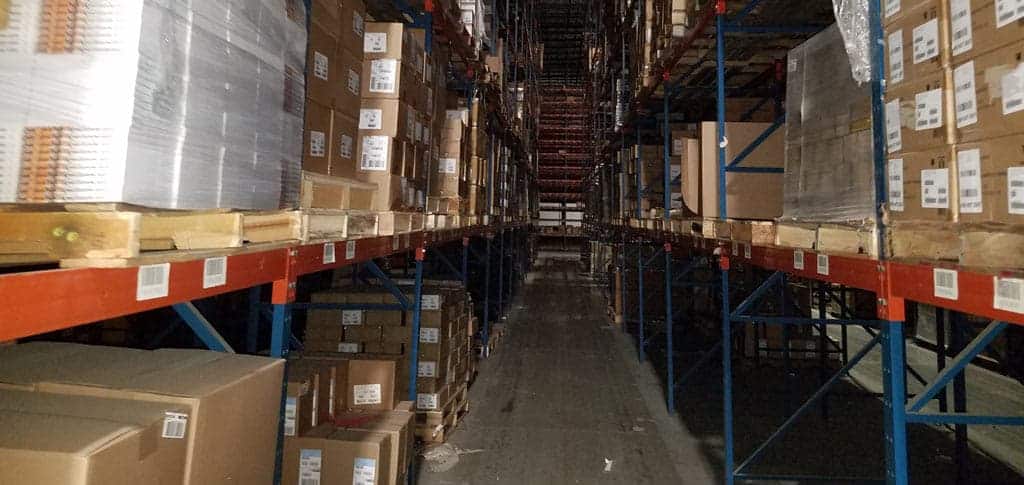Getting the ‘Load Down’ on Pallet Racking
There is not much new under the sun when it comes to racks and pallet loads. You have a pallet loaded with product and it is stored on a rack. No big deal, right? Well, no. The relationship between a rack and pallets is far more involved. Don’t misunderstand; knowing about racks and the various types of loads is far from rocket science.
However, there are several key points you should know, particularly if your plan includes the addition of new or used racking.
Loads: Getting it Right the First Time
Companies considering an investment in additional racking should work closely with a rack designer or specialist. A designer provides necessary direction in selecting the correct racking to ensure safety and efficient operation in the warehouse.
The first consideration a designer takes into account is the load going on the rack. You need to tell the designer more about the loads going on the new racks. For example, what will the average load be on the racks? The average load per shelf is exactly what the term implies—the weight of pallets and products on the pallets on each shelf of your racks.
Information gained from determining the average load aids in finding the seismic down-aisle horizontal force.
What’s that you say? There is no need to consider earthquakes in your region? Think again. You may want to rethink that unless you live in North Dakota and Minnesota. Those are the only two states where seismic activity does not occur.
Once you know your average load per rack shelf, you need to combine it with maximum load per shelf. Again, like average loads, the maximum load is what the term implies—the maximum weight spread across the rack shelf, the rack can safely accommodate. This information provides an accurate estimate to predict what could happen during a seismic event.
Load uniformity
Another load term used frequently is uniformly distributed load or UDL. Before you know what UDL is, you must first estimate the static load. Static loads measure the weight of individual pallet loads “at rest.”
In other words, static loads provide the weight of the pallet and the products on it when it is in a fixed position, such as being on a rack. UDL uses static load information and applies it to a load that covers the entire rack shelf from back to front and side to side.
This information determines a rack’s general capacity rating, important in knowing how much rack is right for your application.

Concentrating or getting to the point
Certain load terms (and applications) have potential to create problems when storing product on racks. Concentrated loads and point loads are two examples. A concentrated load is a static load (in a fixed position, not moving) where the weight isn’t uniformly distributed across the decking surface.
A single pallet filled with product resting on a deck shelf capable of holding multiple pallets is an example of a concentrated load. So is a traditional wood pallet with three runners supporting product the entire length of the pallet.
The weight is concentrated along the supports in a specific area.
Point loads are a little different. As the name implies the load of the pallet, container or similar item rests on specific points or legs is not distributed across the length of the load. Instead, the weight rests on those points. Both concentrated loads and point loads have the potential of causing issues of shelf deflection or worse.
The rack shelf design has greater strength by spreading out the weight and these loads do not allow for that uniform weight distribution.
Impact of attachments on loads
Adding ancillary items to racks also are loads and factor into rack calculations. “What? You mean if I choose to add a sprinkler or fire extinguisher system in my racks, those are loads too?” That is correct. Any attachment used for safety, productivity or whatever, are called dead loads and factor into the design for pallet racking. Why? Dead loads such as a sprinkler system affect rack capacity.
The additional weight from a sprinkler or fire extinguisher system reduces the capacity available for pallet loads. Therefore, your planning for new/additional racking must include information on dead loads.
Best practices for loading pallet racks
All of this load information can be a little confusing, but it is helpful beyond planning for additional racking. This knowledge also provides a guide for best practices when it comes to loading and unloading your racks—and doing so in a safe manner.
Loading your racks is a combination of planning, common sense and physics. Think a teeter-totter and a pyramid. Have you ever seen cheerleaders form a pyramid? They always place the stronger, heavier members at the bottom to the base. Then the lighter team members occupy the remaining spots. You should approach loading your racks in a similar manner.
Place the heavier loads on the bottom followed by lighter loads on rack shelves above it.
The same is true for a teeter-totter. A teeter-totter rests on a fulcrum and achieves balance when both ends are equal in weight. When loading your racks, it’s best to start loading in the middle and then load outward to maintain that balance.
Unloading is best if the same principles are applied, but in reverse.
This is an ideal. Real world situations do not always allow for such a rigid approach. However, your warehouse will be a safer, more efficient workplace if you emphasize this best practice.
You may think loading pallet racks is rocket science after reading this, but it’s really not. It’s just good planning combined with follow through.